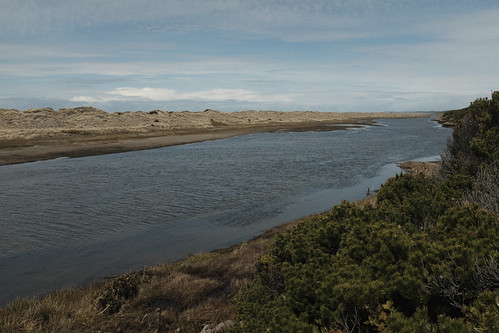It has been said the best way to get into farming is to “marry it or inherit it.” The risks are many and obstacles to entry are age-old — access to land, water, markets and capital. But regardless of whether new farmers married it, inherited it, or neither, one new barrier becoming increasingly problematic is student loan debt, according to the National Young Farmers Coalition.
The national organization conducted a survey of over 700 beginning and aspiring farmers and ranchers and found that student loan debt was a key obstacle to making a living in agriculture or getting started. More than half of respondents were currently farming but struggling to make their student loan payments on a farm income, and one third reported they didn’t pursue farming or were postponing a career in agriculture due to student loan debt. Among these respondents the average student loan debt was $35,000 — a lot for a greenhorn trying to get started on a farmer’s salary.
This survey reflects a national trend in student loan debt. One in five of all American households held some student loan debt according to a Pew Research Center study in 2012. The rates of student loan debt among young people are even higher — 37 percent for those 18 to 29 — and the typical college grads owes the equivalent of two years of income. Nationwide student loan debt has more than doubled to $1.3 trillion from 2004 to 2014. These numbers add up to a national crisis — one that also impacts young farmers and ranchers and the future of the agricultural landscape.
Caleb Howard is a young, part-time rancher and agriculture real estate broker in Joseph, Ore. He feels lucky he and his wife, Katie, left the University of Idaho with a manageable amount of student debt.
“I had a about $17,000 in debt, but if I had left school with $60,000 or $70,000, that would be a different story,” Howard, who studied rangeland management and animal science production, said. “Some students in the same program as me had triple the debt I had. If my wife and I were paying $600 to $700 per month in school debt, we couldn’t afford to farm.”
Student loans are what Howard called “bad debt” because these payments siphon funds away from starting, building, and growing farm businesses in rural communities.
Karie Walker, a Farm Services Agency loan officer in Pendleton, Ore., agrees student loan debt can impede borrowing and farmer success.
“High monthly [student loan] payments can funnel the borrower’s income in one direction and may not leave them with adequate amounts to make their annual farm loan payment,” she said.
While most federal student loans are on a 10-year repayment program, Walker notes that in the 1990s and early 2000s, many students ended up with much longer repayment plans.
“Hefty monthly payments can certainly affect the success of a new operation, especially knowing that they may affect the operation for up to 30 years,” she said.
Just as the National Young Farmers Coalition (NYFC) survey found, people may be delaying a career in farming due to student loan debt. “We have a number of people that grew up farming or ranching, move to off-farm employment, then leave their careers to start farming later in life,” Walker said.
NYFC hopes to address the student loan debt barrier and get more farmers on the land is to add them to the Public Service Loan Forgiveness Program. The program was created in 2007 to help public service professionals such as teachers, nurses, public interest attorneys, government employees and nonprofit professionals pay off federal student debt and incentivize more people to join the public service ranks.
NYCF is pushing for farmers to be included on that list and for farming to be seen as a critical public service.
But is farming a public service?
“Farming offers a public service through food production and stewardship of natural resources that we share,” said Kate Greenberg, western program director for NYFC.
Given the importance of agriculture and the fact that only 6 percent of farmers are under age 35, Greenberg says farmers are a good match for the existing loan forgiveness program.
“Just as we have a critical shortage of new nurses, doctors, and social workers, we have a critical shortage of new farmers,” she said. “Farmers are absolutely critical. This program is one way to build out the pipeline to get more people farming.”
To qualify for the program under the NYCF proposal, new farmers would work full time on a farm that makes at least $35,000 and files a Schedule F tax forms, but would not have to own a business or land. “We wanted to be sure that the people who qualify are building a business or career in agriculture whether or not they own a business or own land,” she said. “We recognize that land access and ownership is not equitable across the country because of historical ag policy and discrimination.”
After 10 years of farming and on-time, income-based payments, the government would cancel the balance of the farmer’s federal student loans.
This approach to incentivizing farming is already being used in New York. The New York State Young Farmers Loan Forgiveness Incentive Program offers loan repayment up to $50,000 for grads who start a farm business within two years of graduating from a New York university and operate their farm five years. So far the number of farmers in the program is small and funding is limited.
Greenberg says making farmers eligible for student loan repayment or forgiveness will support different entry points into agriculture.
“First, multi-generational family farm kids are currently at a crossroads between going to college and taking over the farm,” she said. “Many parents are encouraging kids to get an education, but loan forgiveness would allow them to not have to choose between the farm and a college education.”
Second, she notes that many new farmers are first generation farmers who don’t know they want to farm until they get a college education.
Third, she says, “You have to think about future farmers that may not even be born yet.” She argues the future norm could be much easier entry into farming. Loan forgiveness could help pave a pathway back to the farm and reverse the rural brain drain. “Being able to return with an education builds rural communities.”
What advice can aspiring farmers and ranchers take about managing student loan debt?
Northwest Farm Credit Services (FCS) Relationship Manager Andrea Krahmer said student loan debt is factored into assessing a borrower’s credit worthiness and the level of student debt matters. However, Krahmer also said Northwest FCS offers loan programs specifically for new and small farmers.
“We can be flexible with underwriting guidelines and extra student loan debt may still be OK with some positive offsetting credit factors,” she said.
Krahmer and FSA loan officer Karie Walker both advise that maintaining credit worthiness, regardless of the amount of student debt is key. So is paying student loan debt on time every time.
According to Krahmer, “it becomes even more important to use credit sources responsibly which includes having good credit scores and minimal other consumer debt beyond student loans.” Krahmer explained that student loan debt is not like a car loan, which has a physical asset to offset the loan liability. “Knowledge obtained from attending college is certainly an asset but not something that can be recorded on a financial statement.”
While he can’t put his college education on a balance sheet, young rancher Caleb Howard believes getting a bachelor’s degree was worth it. He also advises there are other options.
“I wouldn’t change my college experience for anything in the world, but maybe a trade school is better preparation for less money,” he said.
Until student loan forgiveness is widely available to new farmers and ranchers, Howard said you can get ahead of your debt while in school. “Get a part-time job. It will go miles.”




